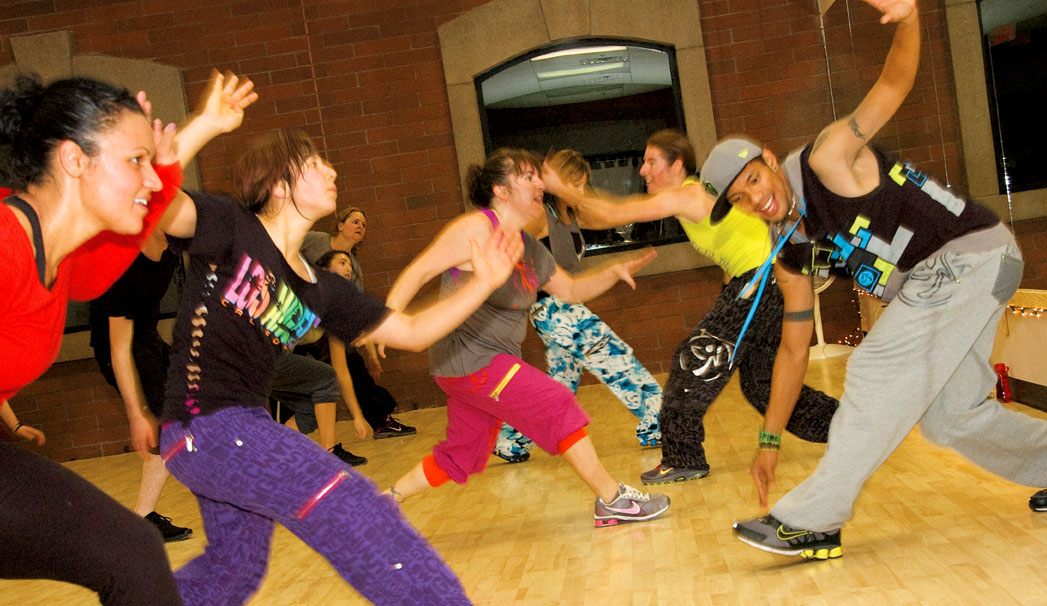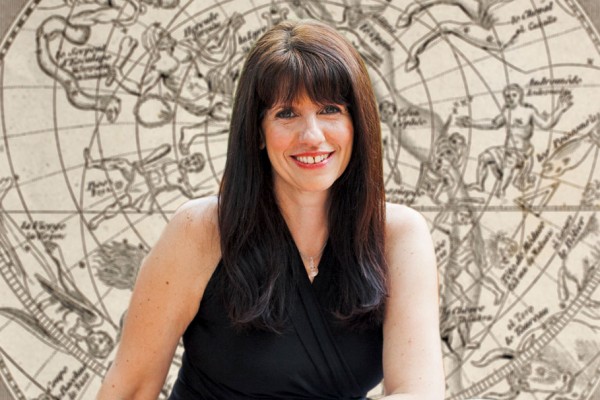For a rural area, Sedona and the Verde Valley offer a surprising variety of dance classes, from ballroom to hip-hop to contra dance. So What are you waiting for? Get out there and shake your booty!
Belly Dancing
Watching Carrie Konyha lead eight students through her intermediate belly dancing class is mesmerizing. The constant jangling of hip scarves adorned with coins and the bemused expression on Carrie’s face capture the imagination. Carrie has been a professional dancer for 25 years. She’s been teaching belly dance since 1998 (eight years of that time in Sedona). The desire to perform is in Carrie’s blood: Her grandfather was a Hungarian violinist and her grandmother was an acrobat with Ringling Bros. Circus. Carrie started out as a burlesque and exotic dancer in Cleveland, but after seeing a belly dancing performance at a nearby Renaissance Fair, she was hooked. “I fell in love with the music, the femininity and the Middle Eastern culture,” she says.
Carrie has studied dance in the Middle East and performed in Arabic communities across the country. Through her company, White Lotus School of Bellydance, she teaches beginning, intermediate and advanced classes that focus on the two types of belly dance: folkloric or tribal and the more refined cabaret style seen in nightclubs and at weddings. (She also has a DVD out that teaches her own brand of dance that she calls “tribaret” – a combination of the two styles.) Classes are taught in eight-week sessions at Sedona Pilates & Fitness Studio; rates begin at $80 per session. In December, students perform in a theatrical belly-dance show at the Old Town Center for the Arts in Cottonwood.
Carrie’s 30-strong student base consists of women and girls ages 11 to 68. “With the kids, I love to teach them to be in a space of self-respect, especially at a time when they are vulnerable and impressionable,” says Carrie, who also works as a psychic reader. “It’s not done in a provocative way.” As for adults, many women who go into the classes come away with a new level of self-confidence and self-esteem. That might be because belly dance isn’t like ballet: You don’t have to be a stick figure to look good on the dance floor.
“It’s good to have some jiggle,” Carrie says, laughing. “Belly dance encompasses all body types and shapes. Because it’s based on organic movement, you can dance much longer than you can when you’re practicing ballet. With ballet, you’re done at 30. I have [belly-dance] teachers who are in their 60s.”
So, what should first-time dancers know about the classes? “You have to be patient,” says Carrie. “It takes a minimum of six months to learn. The students in my class tonight are in their second and third years.”
White Lotus School of Bellydance, 350 W. SR 89A at Sedona Pilates & Fitness Studio in the Old Marketplace Center. 928-282-1587; www.sedonabellydance.com.
Contra Dancing
If you are like a lot of residents in the Verde Valley, the term “contra dancing” is new to you. But if you’re Flagstaff resident Deb Comly, you eat, sleep and breathe the dance. After learning about the style, she relocated from Arizona to the Northeast where she studied contra dance for a year. She returned to Flagstaff and, in 2001, she took the helm of the contra dances that occur the third Saturday of each month (October through May) at the Cottonwood Civic Center from 7 to 10 p.m.
So what is a contra dance? “It’s referred to as traditional American dance,” says Deb. “It came with the settlers from England, and it’s evolved from a more formal version. There are basically two lines of people standing across from each other, and you dance a number of sequences with your partner and your neighbors.” And the origin of the funky name? That’s still in dispute. Some believe it comes from the English phrase “country dance,” while others believe it derived from the French contredans, or “opposites dance.”
We attended one of the events, and, though a dancer admonished us for saying so, it reminded us of square dancing. Deb, who acts as the caller, gives commands such as dosey doe, promenade, turn, swing and stomp. But unlike with square dancing, you won’t see a lot of frilly skirts at a contra dance. It’s come as you are, says Deb. In Cottonwood, anywhere from 40 to 60 people, including young kids, show up to the monthly dances. The dances cost $7 per person, $5 for students and $4 for kids 16 and younger. Deb also leads dances in Flagstaff, and she participates in the annual dance weekend, which takes place this year at the Clarkdale Clubhouse May 4-6 in Clarkdale.
“People are really passionate about contra dance,” says Deb. “It’s really popular in New England. In Boston, there’s a different contra dance every night of the week. There’s even techno-contra with young people dancing to modern tunes.”
And the music is one of the coolest parts of a contra dance: You dance to a live band. At our dance, Just Desserts, a 14-piece band from Flagstaff, played while everyone boogied. “There’s always a band,” says Deb, “and it’s really high-energy music.”
Worried you won’t be able to follow along? Don’t fret: There’s a 30-minute lesson that begins at 6:30 p.m., just prior to the dance. Deb says people always show up for the lesson, though with the number of experienced dancers out on the floor, even newbies won’t be lost for long. “It’s a very welcoming community,” she says.
Cottonwood Contra Dance, 805 N. Main St. at the Cottonwood Civic Center in Old Town Cottonwood on the third Saturday of the month, October through May, 7-10 p.m. 928-634-0486; www.azwedance.org.




